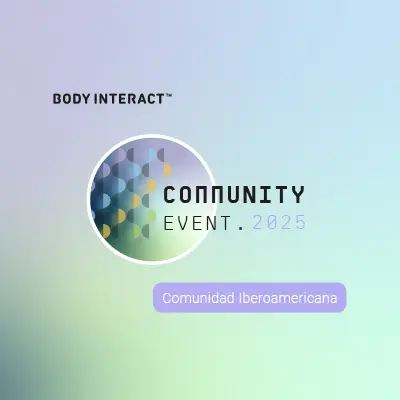Body Interact 2021 Chinese Network was held in Nanning, Guangxi on 23th, July. As a pre-conference event of The 3rd China Meeting on Simulation in Healthcare (CMSH), it attracted professors and teachers from over 50 medical universities and healthcare-related institutions from Beijing, Shanghai, Guangzhou, Shenzhen, and other regions in China.
The event counted on online presentations from professors from Canada, Portugal, and Georgia and in-person panel discussions and workshops carried out by professors from the provinces of Shanghai, Guangzhou, and Nanning.

Opening Words by Director David Wang from Master Medical Simulation Center


Panel Discussion by Professor Hu Wenjie from The First Affiliated Hospital of Sun Yat-sen University and Professor Li Wei from Nan Fang Hospital.
Assessment of Clinical Competencies during Emergency Remote Learning
David Tvildiani Medical University, a private medical university from Georgia offers a Medical Degree Program since 1992.
Their curriculum explores the basic and clinical sciences, clinical and communication skills, public and population health, personal and professional development.
In 2018, David Tvildiani Medical University implemented Body Interact in its curriculum and started by practicing with educators and students. However, in 2020 with the worldwide pandemic, the university also needed to adapt its offer. According to Professor Paata Tsagareishvili, questions came out on “how to pivot the online modality? how can the institutions and their professionals ensure teaching, learning, and assessment activities for students in different time zones?”.
Nevertheless, with the help of the Body Interact Learning Management System educators since then, are able to assign clinical scenarios to students avoiding connectivity and time zone issues, set OSCEs, track their performance, and identify learning gaps.
Professor Paata Tsagareishvili also mentioned in his presentation that Body Interact can help students learn and practice, as well as assess students’ performance.
Workshops
During the Body Interact Global Network event in China, two workshops were also part of the agenda:
- Workshop 1 with Professor Xiang Yang from Huashan Hospital affiliated to Fudan University and Professor Yu Xiaorong from Linfen People’s Hospital
- Workshop 2 by Professor Ji Lily from Zhongshan Hospital affiliated to Fudan University and Professor Luo Ling from Guangxi Medical College




Virtual Patients in the nursing curriculum
Professor Leila Sales, Coordinator of the Nursing degree and Coordinator of Practices Labs and of the Simulation Center at the Portuguese Red Cross School of Health, in Lisbon, guided the audience through the corridors and practice rooms of the simulation center at Red Cross School of Health. Fully equipped with different types of simulators, Body Interact, was highlighted as the tool that allows to bridge the content provided in theoretical classes, in different learning stages of the academic process, to the simulation center in an engaging fashion.
Furthermore, Prof. Leila, illustrated her vision of the part Body Interact as in teaching and training by describing it as the flight simulator for healthcare professionals.
Prof. Leila also emphasized the role Body Interact may have in terms of developing nursing diagnosis skills, patients’ physical assessment and anamnesis abilities, and finally regarding proper independent (eg. Patient positioning) and interdependent (eg. Medication administration) nursing interventions.
The Value of Using Body Interact in the Training of Clinical Reasoning Skills
Daniela Abreu, Instructional designer for Body Interact, provided a final wrap-up of the event presenting firstly globally the benefits and advantages of using Body Interact, and then the Impact Study.
Body Interacts’ presentation focused on the motto “Practice with virtual patients, save real lives”. The audience was able to know, from the perspective of a Body Interact team member how the scenarios work (a), some product features (b), to whom it may be useful (c), and how it can be used (d).
Let’s take a quick look at the facts:
(a) Performing a Body Interact clinical scenario
This will resemble some extend to the pressure of a life-like situation. Start by assessing your patient: get briefing information, collect data from visual and audio cues, make the patient anamnesis, perform a thorough physical exam, monitor the vital signs, and then order and interpret exams. And then define your treatment plan: seek specialty help, perform interventions and administer medication. All of this in a dynamic and evolutive context.
Afterward, you will be able to analyze your performance so you can better prepare for real situations, with no harm made to the patients.
(b)/(c) Product features and to whom it may be useful
Body Interact is an utterly rich educational system, suitable for different audiences – medical doctors, nurses, personal support workers, emergency medical care teams, and healthcare students.
Body Interact portfolio is composed currently of more than 550 virtual scenarios, across 19 different specialties, in settings such as the Emergency Room, Pre-Hospital, and Outpatient.
(d) Approaches of use of Body Interact
Body Interact provides teachers and students a way to deliver clinical practice either in the guided experience with the teacher (in-person in the classroom or simulation center or remotely) or in a standalone manner (using Body Interacts’ Learning Management System).
After Body Interact overview, Daniela presented the updated outcomes of the Impact Study.
As mentioned in previous posts, a set of higher education institutions around the globe, both from nursing and medicine, conducted an international and multicentric study with the aim of understanding the impact of using Virtual Patient Simulators (VPS) in different aspects of Teaching and Learning. Body Interact encouraged more institutions to join and so far, we have counted on the participation of 828 students from 18 institutions, from 14 countries, and 4 different curriculums (Medicine, Nursing, EMS, and Physiotherapy).
The conclusions were that the exposure to Body Interact, the virtual patient simulator, changed students’ perception regarding the importance that the simulator might have in the development and organization of clinical reasoning and communication skills. Also, the simulator fostered an integrated learning process.

Both regular users of Body Interact and those that were now presented to the software, actively participated in the session asking questions, presenting their experiences, and satisfaction with the usefulness of Body Interact as a teaching tool. Also, we have witnessed the will for teachers to connect from now on, engaging in a future community of practice with the common ground of using virtual patients for teaching, learning, and assessing purposes.
“Body Interact is the perfect simulator for PBL method and debriefing method in clinical reasoning curriculum.”
(Course leader from Suzhou)
“This is the first time that I can feel the charm of a simulator and the harmony among teachers, students, and teaching tools.”
(Teacher from Inner Mongolia)
“Body Interact is so miraculous that I can’t help myself operating on it. I can make mistakes in a safe environment which is fantastic.”
(Student workshop participant)

Article in progress







